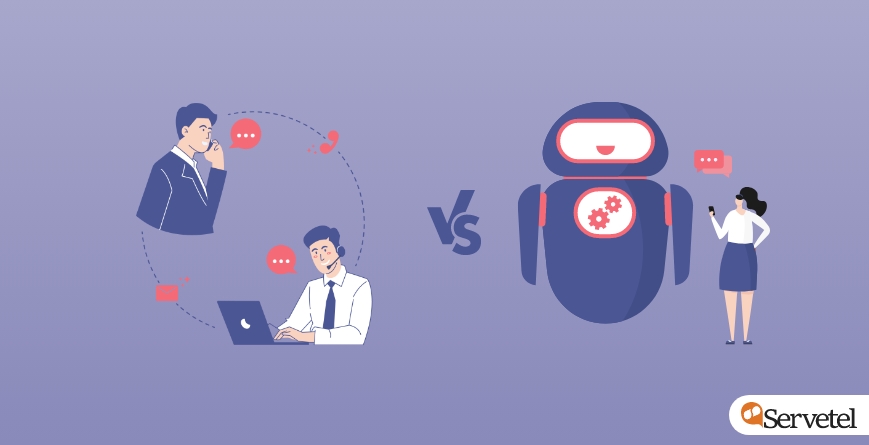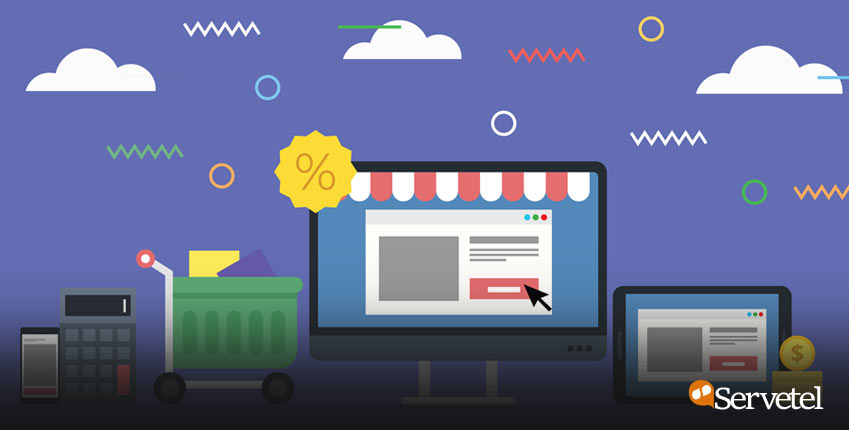With the e-commerce industry flourishing at the speed of light, the competition for delivering the best customer experiences rises. The advent of different communication channels means that choosing the best medium for your clients is a top priority.
Today, people want to communicate with brands via channels convenient for them. Phone calls enable the company and clients to establish a personal bond when they cannot meet physically. Chatbots help customers connect with brands irrespective of the time and geography. Social media allows people to communicate feedback.
However, every platform comes with its own set of limitations. Customers can get tired of being on hold, dialling multiple keynotes to reach the right platform for feedback registration, etc. They might also feel the absence of human connection when talking to a robot.
Therefore, with each mode of communication offering a host of benefits over the other, the contact centre solutions should know when to use and leverage each channel at a given time.
What does your customer expect?
Customer service expectations are incredibly high. At a time when contact centre solutions have expanded so much, ensuring a top-notch customer experience will only help your business grow more.
Communication channels have expanded beyond traditional phone calls, and contact centre solutions have developed newer mediums to enhance customer experience.
Hence supporting your business with the best customer service provider and keeping up with demanding times is imperative for the company and the contact centre solution.
This is where live chat comes in.
But, with the Internet services having gone through fragments of modifications and growth, how does one choose between traditional phone calls and live chats of the contemporary times?
Pro tip: Maintain a balance between calls and live chats, according to the need of the situation.
Phone calls vs live chats
To begin with, none is a clear winner. Both come with their pros and cons.
What a business must understand is when to use which mode of communication and enhance customer experience.
While one set of customers might be more comfortable communicating over calls, the tech-savvy generation might find live chat more valuable.
Similarly, some businesses might suffice their audience with a phone call system, while others might need live chats depending on their customer base.
For a company, it’s essential to learn which communication model would suit their purpose the most rather than jumping to use any of them.
For instance, live chat allows you to reach out to customers and solve queries in real-time. On the flip side, a phone call is more of reactive support, where the contact centre solution allows the customer to initiate the enquiry and then respond rather than nudging or sending push notifications.
In simpler terms, live chats act as a real-time solution, where a customer can find help to their query instead of opening a new tab or flipping through the contact galleries. It often serves as a self-service portal.
Phone calls may feel more time-consuming, but they allow you to connect with customers on a personal level and offer a more meaningful solution. Also, the scope of explaining the problem is bigger than typing too many words into the chatbox.
However, the transcripts of live chats are often easier to analyse than long recordings of phones. This also makes it easier for the company to look up the problem with specific keywords and product names.
Furthermore, analysing phone calls allows the business to go deeper into the problem and better understand the customer’s feedback. With call tracking tools, you can delve deeper into the customer’s tonality and emotions and learn better about their behaviour towards a particular product or service.
Lastly, while on live chats, one may appear too distracted or might have problems understanding each others’ messages. But, phone calls eliminate this problem.
When to use live chat and phone calls?
Live chat is a cost-effective mode of communication that offers a wide range of features. Agents can even handle multiple customers simultaneously without spending on any extra connection.
Live chats are primarily good for businesses that deal with online sales and commerce like Amazon. If your business solely operates on the mobile app, it is always easiest to embed the live chat into the company.
Although it’s the age for quick solutions from behind the screens, phone calls remain one of the most personal modes of communication. A huge chunk of customers, to date, prefer a phone call over any medium of communication. They allow for more nuanced communication and help agents to pick up on intricacies like tone and emotion.
Essentially, phone calls become important when your business is dealing with high-end customers or VIP clients as they expect a personal level of communication from the company in lieu of a premium for a high-end communication system.
Offering the best to your customer
It’s never an ‘A’ or a ‘B’. The ultimate need for any customer is to get a quick and smooth solution to their problem.
In a nutshell, a blended channel of communication is what any contact centre solution must opt to elevate the customer experience. Agents can toggle between live chats and phone calls depending upon the need of the customer.
Ultimately what benefits customers end up helping the companies.
Find the solution perfect for your business needs. Contact our experts today at [email protected] or 1800-120-4132

















